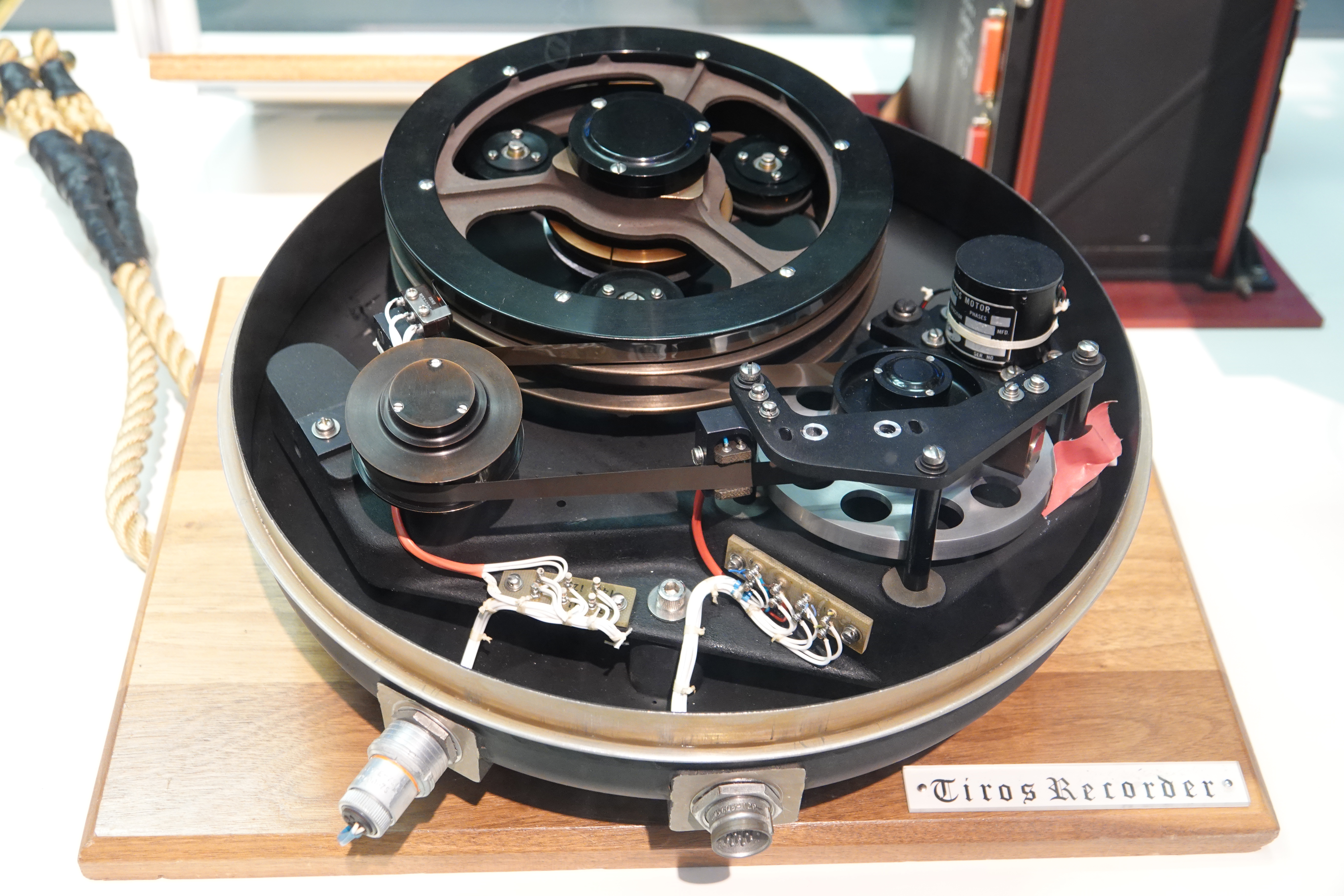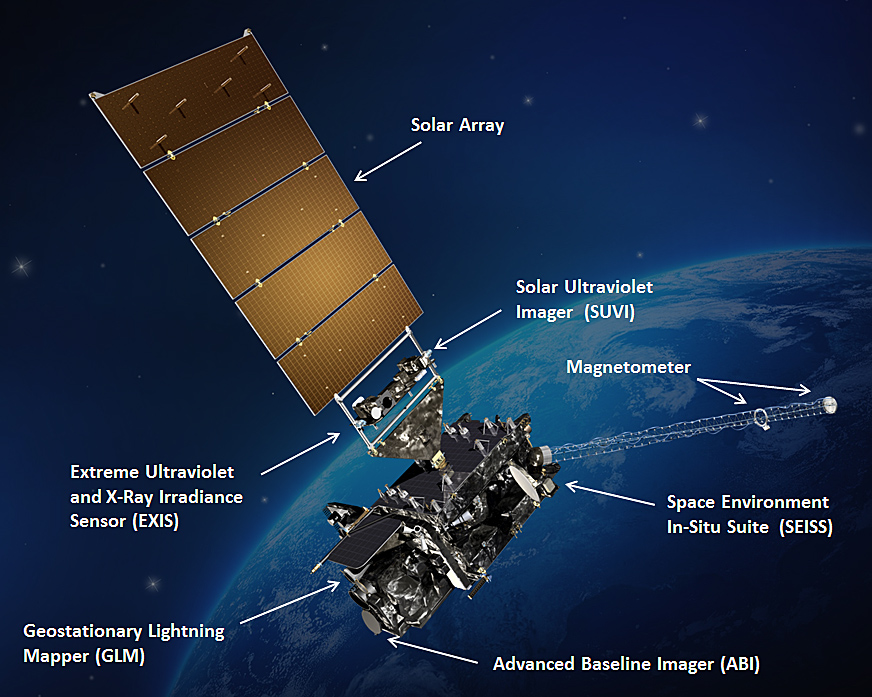|
TIROS-1
TIROS-1 (or TIROS-A) was the first operational weather satellite, the first of a series of ''Television Infrared Observation Satellites'' (TIROS) placed in low Earth orbit. Program The TIROS Program was NASA's first experimental step to determine if satellites could be useful in the study of the Earth. At that time, the effectiveness of satellite observations was still unproven. Since satellites were a new technology, the TIROS Program also tested various design issues for spacecraft: instruments, data and operational parameters. The goal was to improve satellite applications for Earth-bound decisions, such as "should we evacuate the coast because of the hurricane?". The TIROS-1 Program's first priority was the development of a Meteorology, meteorological satellite information system. Weather forecasting was deemed the most promising application of space-based observations. Spacecraft TIROS 1 was an 18-sided right Prism (geometry), prism, across opposite corners and hig ... [...More Info...] [...Related Items...] OR: [Wikipedia] [Google] [Baidu] |
TIROS
Television InfraRed Observation Satellite (TIROS) is a series of early weather satellites launched by the United States, beginning with TIROS-1 in 1960. TIROS was the first satellite that was capable of remote sensing of the Earth, enabling scientists to view the Earth from a new perspective: space. The program, promoted by Harry Wexler, proved the usefulness of satellite weather observation, at a time when military reconnaissance satellites were secretly in development or use. TIROS demonstrated at that time that "the key to genius is often simplicity". TIROS is an acronym of "Television InfraRed Observation Satellite" and is also the plural of "tiro" which means "a young soldier, a beginner". The Advanced Research Projects Agency (now DARPA) initiated the TIROS program in 1958 and transferred the program to the National Aeronautics and Space Administration (NASA) in 1959. Participants in the TIROS program also included, United States Army Signal Research and Development Lab ... [...More Info...] [...Related Items...] OR: [Wikipedia] [Google] [Baidu] |
TIROS-1 Magnetic Tape Data Recorder
TIROS-1 (or TIROS-A) was the first operational weather satellite, the first of a series of ''Television Infrared Observation Satellites'' (TIROS) placed in low Earth orbit. Program The TIROS Program was NASA's first experimental step to determine if satellites could be useful in the study of the Earth. At that time, the effectiveness of satellite observations was still unproven. Since satellites were a new technology, the TIROS Program also tested various design issues for spacecraft: instruments, data and operational parameters. The goal was to improve satellite applications for Earth-bound decisions, such as "should we evacuate the coast because of the hurricane?". The TIROS-1 Program's first priority was the development of a meteorological satellite information system. Weather forecasting was deemed the most promising application of space-based observations. Spacecraft TIROS 1 was an 18-sided right prism, across opposite corners and high. Spacecraft power was suppli ... [...More Info...] [...Related Items...] OR: [Wikipedia] [Google] [Baidu] |
Weather Satellite
A weather satellite or meteorological satellite is a type of Earth observation satellite that is primarily used to monitor the weather and climate of the Earth. Satellites are mainly of two types: polar orbiting (covering the entire Earth asynchronously) or geostationary (hovering over the same spot on the equator). While primarily used to detect the development and movement of storm systems and other cloud patterns, meteorological satellites can also detect other phenomena such as city lights, fires, effects of pollution, auroras, sand and dust storms, snow cover, ice mapping, boundaries of ocean currents, and energy flows. Other types of environmental information are collected using weather satellites. Weather satellite images helped in monitoring the volcanic ash cloud from Mount St. Helens and activity from other volcanoes such as Mount Etna. Smoke from fires in the western United States such as Colorado and Utah have also been monitored. El Niño and its effects on wea ... [...More Info...] [...Related Items...] OR: [Wikipedia] [Google] [Baidu] |
TIROS-2
TIROS-2 (or TIROS-B) was a spin-stabilized meteorological satellite. It was the second in a series of Television Infrared Observation Satellites. It re-entered in May 2014. Spacecraft TIROS-2 was an 18-sided right prism, 107 cm in diameter and 56 cm high, with 9,260 1 by 2 cm silicon solar cells covered the top and sides. Five small directly opposed pairs of solid-fuel thrusters maintained a spin of 8 to 12 rpm. For attitude control, the spacecraft used an infrared horizon sensor and a magnetic attitude control device, made of 250 cores of wire wound around the outer surface, which oriented the spin axis to a 1 to 2 degree accuracy. It also had a direction indicator for picture orientation. The satellite had two independent television camera subsystems, one low-resolution and one high-resolution, for taking pictures of cloud cover. Each camera had a magnetic tape recorder for storing photographs while out of range of the ground station network. It also had a ... [...More Info...] [...Related Items...] OR: [Wikipedia] [Google] [Baidu] |
Meteorology
Meteorology is the scientific study of the Earth's atmosphere and short-term atmospheric phenomena (i.e. weather), with a focus on weather forecasting. It has applications in the military, aviation, energy production, transport, agriculture, construction, weather warnings and disaster management. Along with climatology, atmospheric physics and atmospheric chemistry, meteorology forms the broader field of the atmospheric sciences. The interactions between Earth's atmosphere and its oceans (notably El Niño and La Niña) are studied in the interdisciplinary field of hydrometeorology. Other interdisciplinary areas include biometeorology, space weather and planetary meteorology. Marine weather forecasting relates meteorology to maritime and coastal safety, based on atmospheric interactions with large bodies of water. Meteorologists study meteorological phenomena driven by solar radiation, Earth's rotation, ocean currents and other factors. These include everyday ... [...More Info...] [...Related Items...] OR: [Wikipedia] [Google] [Baidu] |
Cape Canaveral Air Force Station Space Launch Complex 17
Space Launch Complex 17 (SLC-17), previously designated Launch Complex 17 (LC-17), was a launch site at Cape Canaveral Space Force Station, Florida used for Thor and Delta launch vehicles launches between 1958 and 2011. Originally built in 1956, SLC-17 features two expendable launch vehicle (ELV) launch pads, SLC-17A and SLC-17B. The pads were operated by the 45th Space Wing and have supported more than 300 Department of Defense, NASA and commercial missile and rocket launches. History SLC-17 was built in 1956 by the United States Air Force for use with the PGM-17 Thor missile, the first operational ballistic missile in the arsenal of the United States. It was initially designed for testing suborbital launches of the Thor, in accordance to the IRBM's planned stationing in the United Kingdom as part of Project Emily. Pad 17A supported its first Thor missile launch on 3 August 1957, and Pad 17B supported its first Thor launch on 25 January 1957. As the Thor got wound down fr ... [...More Info...] [...Related Items...] OR: [Wikipedia] [Google] [Baidu] |
Monopole Antenna
A monopole antenna is a class of radio antenna consisting of a straight rod-shaped conductor, often mounted perpendicularly over some type of conductive surface, called a ground plane. The current from the transmitter is applied, or for receiving antennas the output signal voltage to the receiver is taken, between the monopole and the ground plane. One side of the feedline to the transmitter or receiver is connected to the lower end of the monopole element, and the other side is connected to the ground plane, which may be the Earth. This contrasts with a dipole antenna which consists of two identical rod conductors, with the current from the transmitter applied between the two halves of the antenna. The monopole antenna is related mathematically to the dipole. The vertical monopole is an omnidirectional antenna with a low gain of 2 - 5 dBi, and radiates most of its power in horizontal directions or low elevation angles. Common types of monopole antenna are the w ... [...More Info...] [...Related Items...] OR: [Wikipedia] [Google] [Baidu] |
Cyclone
In meteorology, a cyclone () is a large air mass that rotates around a strong center of low atmospheric pressure, counterclockwise in the Northern Hemisphere and clockwise in the Southern Hemisphere as viewed from above (opposite to an anticyclone). Cyclones are characterized by inward-spiraling winds that rotate about a zone of low pressure. The largest low-pressure systems are polar vortices and extratropical cyclones of the largest scale (the synoptic scale). Warm-core cyclones such as tropical cyclones and subtropical cyclones also lie within the synoptic scale. Mesocyclones, tornadoes, and dust devils lie within the smaller mesoscale. Upper level cyclones can exist without the presence of a surface low, and can pinch off from the base of the tropical upper tropospheric trough during the summer months in the Northern Hemisphere. Cyclones have also been seen on extraterrestrial planets, such as Mars, Jupiter, and Neptune. Cyclogenesis is the process of cyclone f ... [...More Info...] [...Related Items...] OR: [Wikipedia] [Google] [Baidu] |
Cape Canaveral Space Launch Complex 17
Space Launch Complex 17 (SLC-17), previously designated Launch Complex 17 (LC-17), was a launch site at Cape Canaveral Space Force Station, Florida used for Thor and Delta launch vehicles launches between 1958 and 2011. Originally built in 1956, SLC-17 features two expendable launch vehicle (ELV) launch pads, SLC-17A and SLC-17B. The pads were operated by the 45th Space Wing and have supported more than 300 Department of Defense, NASA and commercial missile and rocket launches. History SLC-17 was built in 1956 by the United States Air Force for use with the PGM-17 Thor missile, the first operational ballistic missile in the arsenal of the United States. It was initially designed for testing suborbital launches of the Thor, in accordance to the IRBM's planned stationing in the United Kingdom as part of Project Emily. Pad 17A supported its first Thor missile launch on 3 August 1957, and Pad 17B supported its first Thor launch on 25 January 1957. As the Thor got wound down from ... [...More Info...] [...Related Items...] OR: [Wikipedia] [Google] [Baidu] |
Spin Stabilization
In aerospace engineering, spin stabilization is a method of stabilizing a satellite or launch vehicle by means of spin, i.e. rotation along the longitudinal axis. The concept originates from conservation of angular momentum as applied to ballistics, where the spin is commonly obtained by means of rifling. For most satellite applications this approach has been superseded by three-axis stabilization. Use Spin-stabilization is used on rockets and spacecraft where attitude control is required without the requirement for on-board 3-axis propulsion or mechanisms, and sensors for attitude control and pointing. On rockets with a solid motor upper stage, spin stabilization is used to keep the motor from drifting off course as they don't have their own thrusters. Usually small rockets are used to spin up the spacecraft and rocket then fire the rocket and send the craft off. Rockets and spacecraft that use spin stabilization: * The Jupiter-C and Minotaur V launch vehicles used spin-stabiliza ... [...More Info...] [...Related Items...] OR: [Wikipedia] [Google] [Baidu] |





